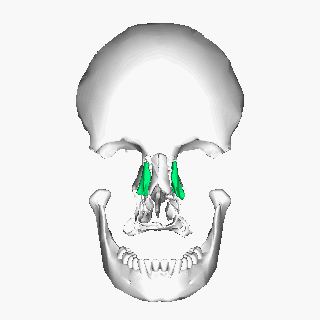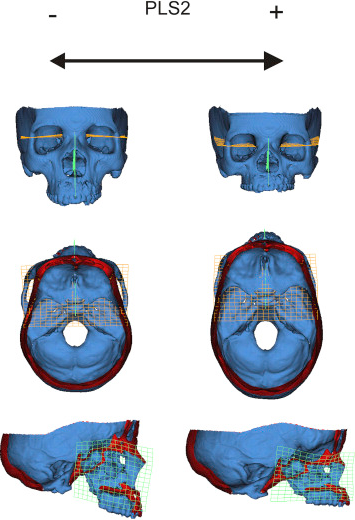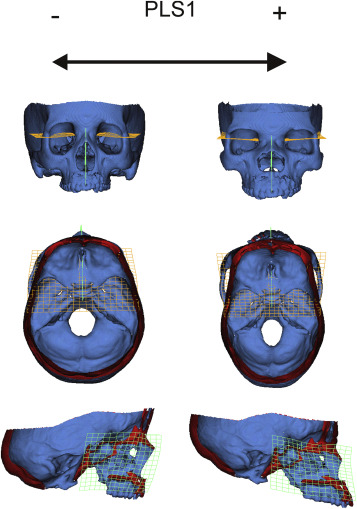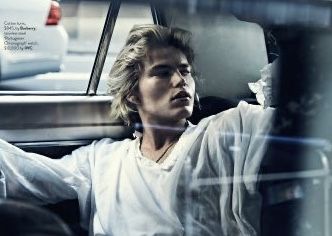AutisticBeaner
Nosebreather
- Joined
- Oct 13, 2019
- Posts
- 8,921
- Reputation
- 12,376
The three main factors, which I think determine a good, attractive eye area are upper eyelid exposure, canthal tilt and under eye support, where the latter two are somewhat interconnected. Of course there are more factors, like eyelash density or eye color, but I think these are rather insignificant when compared with the aforementioned three.
Under eye support:
The under eye support seems to be determined for the most part by the height of the cheekbones. In extreme cases this can lead to obvious show of the sclera (the white part of the eye) below the iris.


Notice both examples possessing extraordinarily low, undefined, badly developed cheekbones. Before taking a look at positive examples, let's move on to the second main factor.
Canthal tilt:
Canthal tilt seems to be strongly affected by the height of the cheekbones, too. Though what I've noticed here poses some sort of a mystery to me. Take a look at these two examples:


Despite having more negatively tilted eyes than the examples from before, they don't seem to have lower cheekbones than they do, do they? It looks like it's the cheekbone itself, which is negatively tilted.
This is just an illustration to show what I'm talking about. I am not saying that this is definitely true.

But this isn't all that important since this mainly only concerns the most extreme cases. Generally, the less well developed the cheekbones, the worse the under eye support and the canthal tilt. I just wanted to showcase that a differentiation of the causes can be made.
Now the reason for why I wanted to discuss the two factors first is because people with very well developed cheekbones practically always have both postitive canthal tilt and good under eye support. While there's some people that lack a bit more in the canthal tilt department than in that of the under eye support or vice-versa, when we take a look at very well developed faces we will notice that virtually every one of them is well off in both categories. the shape of the eye (or just the lower part of it, for what it's worth) will always look something like this:



Upper eyelid exposure:
The last part of this thread, to complete the trifecta. Let me start off by saying that I think a significant part of your eyelid exposure is affected by the fat pad right above it. Though what I think is even more influential is the so-called "browridge height" and that's what I'm going to get into. Instead of looking at the height of the browridge, something that I think should be considered as well is the height of the eye itself. A lower set eye would be farther away from the browridge and thus, evidently allow for more upper eyelid exposure. I'm not really sure about all of this but what I do know is that the eyes of people with a well developed face (like the three above) are generally closer to the browridge, their browridge height seems to be lower. Lower set eyes might be correlated to long midfaces. This guy's skull is relatively well developed but he has a long midface and also a lot of space between his eyes and his browridge. I'm thinking that the since the cheekbones are lower than they should be, the eyes might have gone down with them and created this distance between the eyes and the browridge.

All three features (UES, CT, UEE) correlate somewhat with each other. A person with positive canthal tilt is also more likely to have little upper eyelid exposure, etc. This is because those three features are all results of good developement.
If you disagreed at some point, feel free to debate me on any of this.
Under eye support:
The under eye support seems to be determined for the most part by the height of the cheekbones. In extreme cases this can lead to obvious show of the sclera (the white part of the eye) below the iris.


Notice both examples possessing extraordinarily low, undefined, badly developed cheekbones. Before taking a look at positive examples, let's move on to the second main factor.
Canthal tilt:
Canthal tilt seems to be strongly affected by the height of the cheekbones, too. Though what I've noticed here poses some sort of a mystery to me. Take a look at these two examples:


Despite having more negatively tilted eyes than the examples from before, they don't seem to have lower cheekbones than they do, do they? It looks like it's the cheekbone itself, which is negatively tilted.
This is just an illustration to show what I'm talking about. I am not saying that this is definitely true.

But this isn't all that important since this mainly only concerns the most extreme cases. Generally, the less well developed the cheekbones, the worse the under eye support and the canthal tilt. I just wanted to showcase that a differentiation of the causes can be made.
Now the reason for why I wanted to discuss the two factors first is because people with very well developed cheekbones practically always have both postitive canthal tilt and good under eye support. While there's some people that lack a bit more in the canthal tilt department than in that of the under eye support or vice-versa, when we take a look at very well developed faces we will notice that virtually every one of them is well off in both categories. the shape of the eye (or just the lower part of it, for what it's worth) will always look something like this:



Upper eyelid exposure:
The last part of this thread, to complete the trifecta. Let me start off by saying that I think a significant part of your eyelid exposure is affected by the fat pad right above it. Though what I think is even more influential is the so-called "browridge height" and that's what I'm going to get into. Instead of looking at the height of the browridge, something that I think should be considered as well is the height of the eye itself. A lower set eye would be farther away from the browridge and thus, evidently allow for more upper eyelid exposure. I'm not really sure about all of this but what I do know is that the eyes of people with a well developed face (like the three above) are generally closer to the browridge, their browridge height seems to be lower. Lower set eyes might be correlated to long midfaces. This guy's skull is relatively well developed but he has a long midface and also a lot of space between his eyes and his browridge. I'm thinking that the since the cheekbones are lower than they should be, the eyes might have gone down with them and created this distance between the eyes and the browridge.

All three features (UES, CT, UEE) correlate somewhat with each other. A person with positive canthal tilt is also more likely to have little upper eyelid exposure, etc. This is because those three features are all results of good developement.
If you disagreed at some point, feel free to debate me on any of this.






















